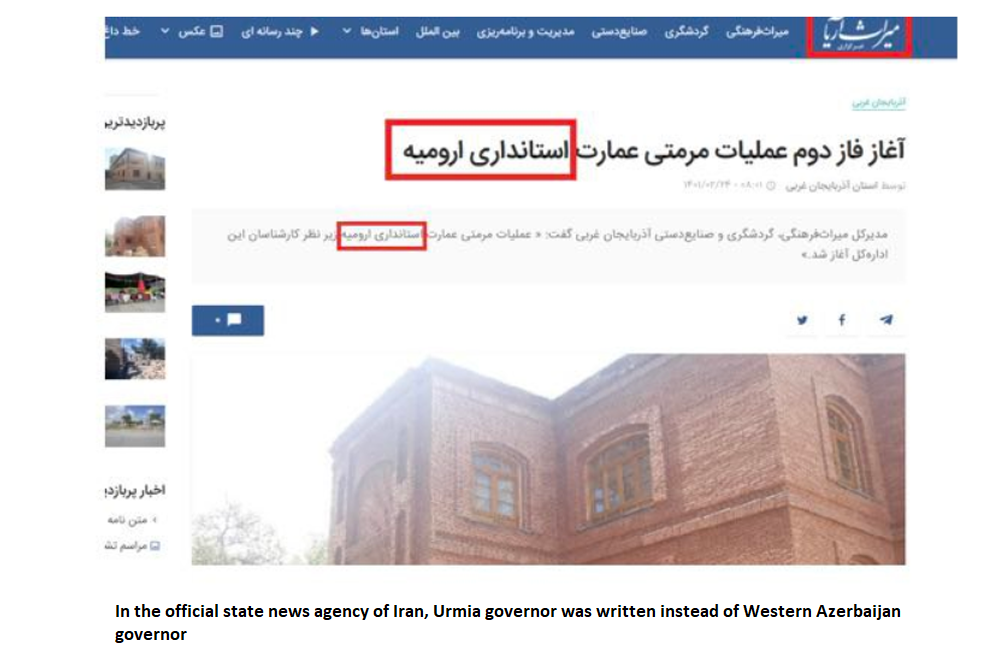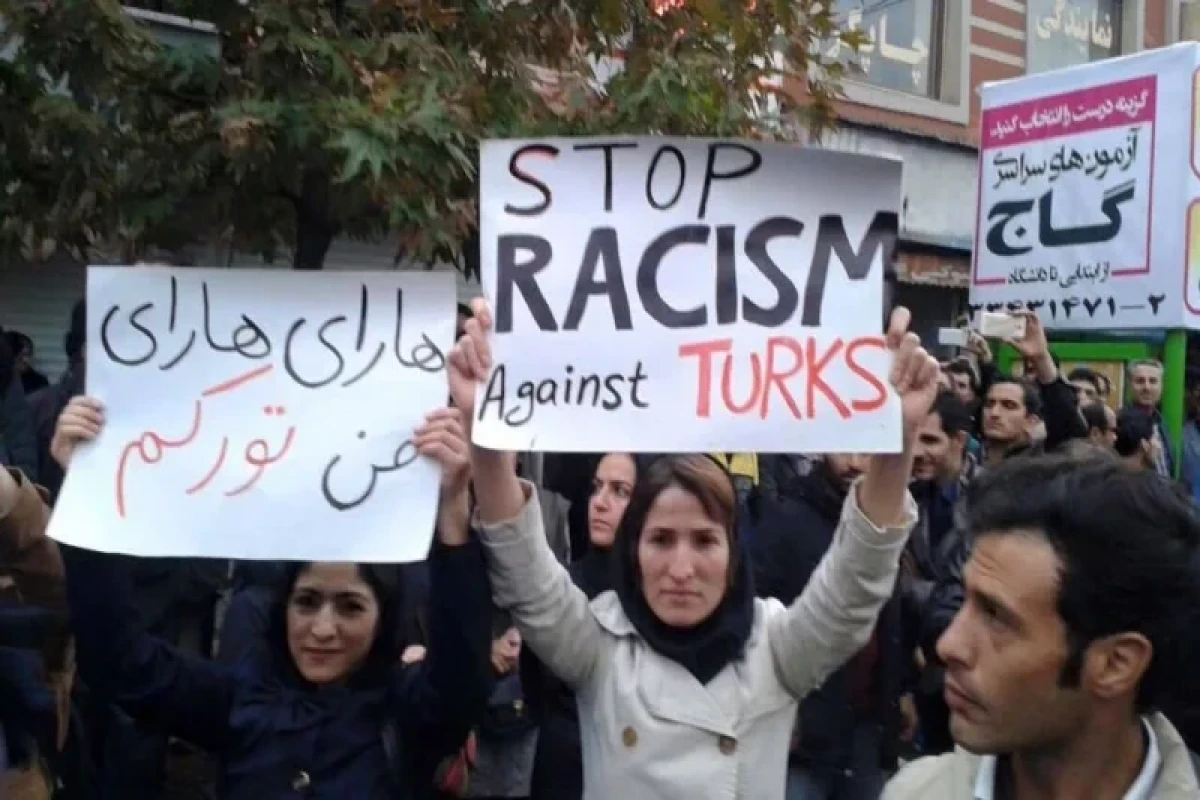APA presents the article "Persianization of Toponyms in South Azerbaijan" by Muhammad Rahmanifar within the framework of the "Know South Azerbaijan" project.
Toponyms are of special importance in geographical and anthropological studies. Generally, landscape elements, such as the plants that grow in a place, the animals that live there, as well as the rocks, colors, waterways, and even the characters that live, work, or fight there can be the origin of particular toponyms. Geographical names, city or village names, besides being able to reflect some important features of the mentioned place, are also important from a historical point of view. These names, along with other historical documents, are used in historical research to determine who the ancient inhabitants of a region were. On the other hand, these names reflect the identity of the inhabitants of a land. For example, in a country like Iran, if we travel to the southwest of this country, we will often come across Arabic names, but in the northwest and some other regions, we will come across Turkish names.
In 1925, after the rule of the Turkish Gajar dynasty was officially abolished in Iran, and the coming to power of the Persian Pahlavi dynasty, changing the toponyms became a part of a wider policy implemented to erase the identity of the Azerbaijani Turks. In other words, in accordance with the Persianization policy of the Turks in Iran, especially the Turks of South Azerbaijan, by banning their mother tongue, distorting their history, and belittling their national identity, the geographical names of the places where they lived were also changed.

Of course, this policy was not unique to the period of Pahlavi rule. The same policy continued after the Islamic Revolution and the establishment of the Islamic Republic in Iran. The important point here is that both the Pahlavi monarchy and the government of the Islamic Republic of Iran behaved very cautiously and cunningly in this matter and tried to implement it as quietly and step by step as possible over a long period of time in order not to cause widespread protest by the Turks of South Azerbaijan. Thus, when they changed the name of each place, they faced only short-term protests from the people living in those places and managed to suppress those protests in a short time.
In this short article, we will try to show examples of how the Iranian government changed Turkish toponyms into Persian in the last hundred years in South Azerbaijan. However, before addressing the issue of changing the names of geographical places in South Azerbaijan, it would not be bad to mention that it has acquired a transnational and cross-border aspect, especially in recent years. Especially after the victory of the victorious army of Azerbaijan in the 44-day war in Karabakh and the defeat of Iran's allies, that is, the Armenians, most of the media and press of this country refuse to call Azerbaijan the "Republic of Azerbaijan" and instead use the so-called "Baku Republic" or "Baku Regime" they use meaningless expressions! At the same time, when talking about the cities of Karabakh, instead of naming them in Azerbaijani Turkish, they use so-called Armenian names. Even with the approval of the Tehran City Council, fictional names were given to some streets of this city, for example, "Badkube" instead of Baku and "Shushi" instead of Shusha.
In fact, removing the name of Azerbaijan from both banks of the Araz River is an insidious and long-term policy of Iran. We noted that the press and media of this country try not to mention the name of Azerbaijan as much as possible. As we have emphasized, this is not a new policy. This policy towards Azerbaijan and at the same time against the Turks started about a hundred years ago when the Pahlavis came to power and continues to this day. Beginning with the reign of Reza Shah Pahlavi, the name of Azerbaijan was gradually removed from many historical regions of South Azerbaijan under the pretext of new country divisions.
Some historical cities of South Azerbaijan, such as Astara, Bijar (Garus), Gurva, Songur, Saqqiz, were divided among other ostans (provinces). On the other hand, under the pretext of new country divisions, new ostans were created and the name of Azerbaijan was removed from them. For example, today in the official administrative and administrative divisions of the country, in the names of cities and provinces, ostans (provinces) such as Zanjan, Gazvin, Hamadan, Alburz and Ardabil are not considered a part of South Azerbaijan, and the name Azerbaijan remains only on two ostans called East Azerbaijan and West Azerbaijan!
Even when it comes to these two provinces, which have preserved the name of Azerbaijan, the Iranian media and press try to avoid using the name of Azerbaijan as much as possible, instead using fictional expressions such as Tabriz Province or Urmia Province. Although this action caused a serious and widespread protest by the South Azerbaijani Turks, it seems that the Iranian government has a serious will to forget the name of Azerbaijan, and this deliberate mistake has been repeated many times in the government press and television.

Even sometimes these expressions were used in the language of Iranian officials, and even during the presidency of former president Hassan Rouhani, Iran used the expression Urmia province, not West Azerbaijan province! Moreover, PKK-affiliated terrorist groups, which have their eyes on the territory of West Azerbaijan, usually use the name Urmia province instead of the name West Azerbaijan Province.
Cities
Three approaches were taken into account in changing the names of the cities and towns of South Azerbaijan:
1. In some cases, the Turkish names of the cities were changed to Persian: For example, Savuj Bulag→ Mahabad, Sarı Dash→ Sardasht, Arabler→ Poldasht, Sain Gala→ Shahin Dej, Tufargan (Duvargan) → Azershahr, Saraskend→ Hashtarai→ Hashtrud, Tikan Tepe→ Tekab, Malik Village→Malekan, Yam→Payam, Bey village→ Bukan, Aghca city→ Aceshahr→ Ajabshir, Khana→ Piranshahr, Uchnuva→ Oshnaviyye...
2. In other cases, by merging several settlements and creating a new city, the Turkish names of the previous settlements were overshadowed and the newly established city was given a Persian name: For example, Gerger + Alamdar (a Turkishized Arabic + Persian name) → Hadishahr...
3. Building new cities, towns, neighborhoods, and residential complexes in South Azerbaijan and giving them Farsi or Arabic names: For example, Parsabad, Andishe, Elahiyye, Vali-asr, Punek, Kuye-Abrisham, Kuye-Safa, Isar, Ares (Persian version of "Araz" name)...
Rivers, mountains, valleys
The names of rivers, mountains and valleys located in South Azerbaijan are almost entirely Turkish. However, in the last hundred years, the Iranian government tried to change some of the geographical names to Persian: For example, Araz→ Ares, Cigati river→ Zarrine River, Tata`u river→ Simine River, Agh river→ Sefid River, Aji river→ Talkhe river...
As for the names of the mountains, they tried to change the names of only the mountains that are very familiar to people or known as places of rest and where many people travel on vacations: Kara dag→ Aresbaran, Savalan→ Sabalan, Garavul mountain→ Shirkuh...
They say Liars have a light mind. The Iranian government sometimes does ridiculous things when it changes names in South Azerbaijan. For example, there are two peaks called Gargalan in the Hamadan region. Forgers who thought that the word Gargalan came from the word Crow, immediately changed the name of one of the peaks to Kalagh Lane (Crow's Nest), and another to Daem Barf (Always Snow)!
Lake Urmiya, which was deliberately drained by the Iranian government and caused harmful disasters today with the intention of putting the South Azerbaijani Turks in a difficult situation and forcing them to migrate from Azerbaijan, until twenty years ago, when it was full of water, had many islands, and those names can be said that all their names have been changed to Persian: Gamichi tepe→ Kuchek tepe (not knowing that the word "small" or "small" is Turkish, they mistook this word for Persian), Shah Saranli→ Mehr, Chat tepe→ Chak tepe, Sari tepe→ Zer tepe, Daneli→ Nahid, Ag dag→ Sepid kuh, Gamichi→ Nakhoda, Yanikhli→ Atesh, Flat stone→ Takhtan, Goyun dag→ Kabudan...
Villages
Compared to the names of the cities of South Azerbaijan, the village names have undergone more changes. In most cases, Persian names similar to earlier Turkish names are selected and tried to show that these names were Persian from the beginning! Of course, sometimes we come across non-Persian names. However, these non-Persian names are generally Persianized names. It seems that the government's goal is to erase Turkish and Azerbaijani identity from South Azerbaijan. The number of villages with Persianized names is much larger. But we will mention only a few examples here:
Pelma yer→ Por mehr, Sumay→ Some`e, Köhsalar (Koksalar) → Kuhsalar, Shah bey→ Shah abad→ Shave, Boz gala→ Bozgale (goat)!, Dere lake→ Darre Gul, Tarı gaya→ Toragıyye, Utskli→ Oshshag , Souk (another version of the word "cold") → Shayeq, Surmelik→ Saraye Malek, Barış→ Baranj, Suca→ Shoja`, Shawalı→ Sha`banlu, Başdam→ Bastam, Güçu var→ Koca abad, Su batan→ Taze deh, Galacık → Aziz Abad, Jeyranli→ Carihani, Gara su→ Siyeh Çeşme, Gazan Khan→ Ghaziyan, Tarim→ Abbar, Galalar→ Gallat...
Let us also add that sometimes the so-called names they gave to Azerbaijani villages did not satisfy themselves, and for this reason, we sometimes see that they change the name of a village many times. For example, the village whose old name was Gönük, but later called Köynek, was first named Kohnak, then Quhicin, and finally Kuyenik! Or they changed the name of Shah Bey village located in Hamedan region to Shah Abad and then to Shave.
***
What we have mentioned here is a very small part of the cases of changing Turkish names to Persian in South Azerbaijan. Also, note that almost all newly built streets, neighborhoods and buildings, facilities, workplaces, parks, recreation and tourism centers are named after Persian or Arabic names. Even the Turkish names given by the people are changed in many places. Names of different sections of historical markets of South Azerbaijan; the Turkish names of many alleys, streets, squares and neighborhoods in the cities were changed to Persian or Arabic. For example, Gut Square→ Meydane Qotb, Silver Rock→ Damascus, Ebony→ Gods, Stone Bridge→ Pole Sangi, Gari Bridge→ Pole Gari...

Changing Turkish names to Persian or Arabic is not only considered cultural genocide but also sometimes includes insults against the Turks of South Azerbaijan. For example, the settlement named Akhma gaya (rock), which has already joined Tabriz was named Akhmaqiyye. In one case, the word "Akhmaq" is sometimes pronounced as "Ekhmaq" in Tabriz. After many protests, they changed the name of Akhma Gaya to Shahid Chamran instead of returning it. Or, as another example, they changed one of the neighborhoods of Tabriz called Sari Gaya (Yellow Rock) to Saregiya! However, the Arabic word "sareq", which is also used in Persian and known in South Azerbaijan, means thief, and Sareqiyya means "home of thieves"!
In the end, let's also note that in recent years, as a result of the expansion of the wave of self-return among the Turks of South Azerbaijan and the increase of their protests and demands, we see the return of the original Turkish names of some places. However, the number of distortions is so large that such measures cannot compensate for all of them.


